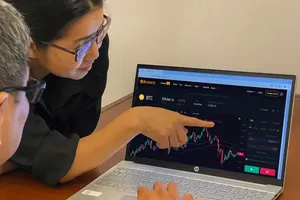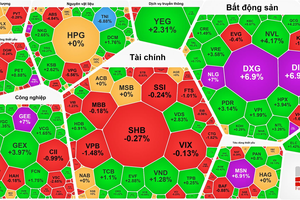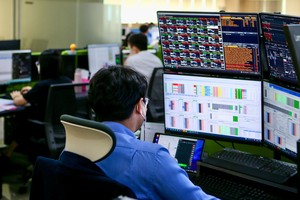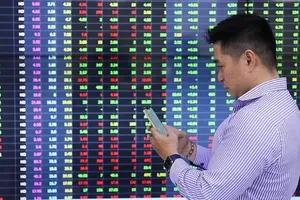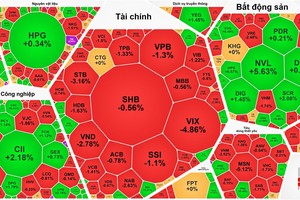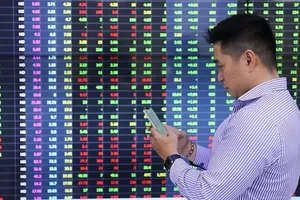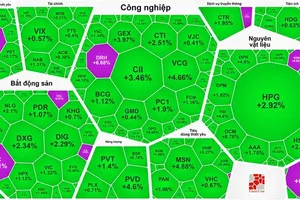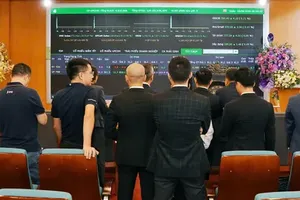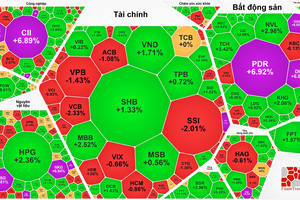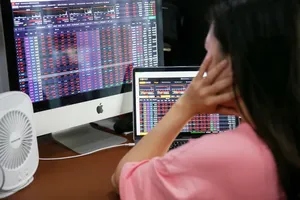 |
Liquidity quite low
The VN Index has always been considered a representative indicator of the whole stock market in general, but it does not always represent investment opportunities. During the sideways market phase that has lasted from the beginning of 2023, the return rate of stocks differed greatly, leading to an uncomfortable situation for many investors. If one looks at the developments and the index predicting the trends and trade, it is worrisome to see that the VN Index has no clear wave direction and that liquidity is quite low. If one looks at stocks, the VN Index drops sharply, and panic may grow with the price being affected.
For the majority of technical analyst investors, many indicators also signal a market with no direction, or inertia lasting for many months. It is not a favorable market for trading and investors are often limited in participating, partly because technical signals only work well when the market has a clear trend of either up or down, partly because the probability of picking the wrong stock in such a sideways phase is very high. It can be seen quite clearly that the liquidity level has decreased a lot since the VN Index reached its highest peak in the first five months of 2023 at the end of January. The reason is partly due to the overall cash flow shortage, and partly because investors have made limited transactions.
In the Vietnamese stock market, the speculative nature is very high. Hence, even in the dull sideways phase, stocks will still make waves, or sometimes even big waves. From the beginning of May until now, although the VN Index has only achieved a negligible profit of 1.1 percentage points, there are still more than 40 stocks with profits above 10 percentage points and half of these have a profit of over 15 percent. However, only a small fraction of investors make the above statistical returns, because trade is always imperfect. Investors miss the first bullish phase, take profits too early by about 10 percent and quit the rest. More than 40 stocks with profits 10 times higher than the average are only equivalent to about 11 percent of the stocks on HoSE.
On the other hand, most of the stocks with such large gain margins are speculative stocks. Most of these shares have a market price of less than VND10,000. In other words, the most profitable activity in the past was speculating on small stocks with low market prices and more than half of these shares only have an average liquidity of below VND10 bln per session.
Even from a volatility perspective, every price increase is good, and investors see profits. However, from a market perspective, stocks with too little liquidity often only gather small investors, while large investors do not trade. For instance, the stock with the strongest increase in price range since the beginning of May is SMA, at above 39 percent but averaging less than VND84 mln per day. CIG increased by 32.3 percent with average liquidity at VND1.5 bln per day. There were also some strong gainers and good liquidity such as with EVG, PSH, FIT, DLG, FCN, and VIX, but compared to the overall liquidity of the market it was still very small. To summarize, although recent speculative activities have brought some excitement to the market and generated positive profits for a group of investors, it can be considered as just a temporary spike.
Decrease in cash flow
Retail investors are likely to have higher speculative performance than large, institutional, or fund investors in some periods, such as this May. The reason is not that they are better, but because individual investors choose easy stocks and are more willing to accept risks. On the other hand, institutions managing other people's money are bound by clear regulations and have to adhere to trading regulations such as restricted transactions at times when the market is not trending. While professional investors place more importance on long-term investment rather than making a profit in a short-term deal.
Statistics show that the volatility in liquidity of large-cap stocks is often traded by professional investors and has a great deal of influence on the trends in the market represented by the VN Index. When the liquidity of this group is low, such as in the VN30 basket with a small portion of the total daily transactions, the VN Index is mostly flat or down.
For instance, the average trading of the VN30 basket from the beginning of May to now only accounts for an average of 30 percent to 32 percent of the total matched value of the VN Index. This represents a decrease in large cash flow. This is an important sign because major stock market trends cannot be separated from the disbursement activities of large organizations and investors. The reasons can be many, but the views of the institutions are often related to the fundamentals or cautious accumulation cycle.


